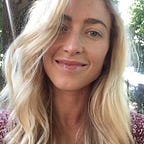Why It Can Be Hard to Identify With Childhood Trauma
“Trauma is personal. It does not disappear if it is not validated. When it is ignored or invalidated the silent screams continue internally heard only by the one held captive.”― Danielle Bernock, Emerging With Wings: A True Story of Lies, Pain, And The LOVE that Heals
Trauma. Abuse. Neglect.
Throughout my entire childhood and into adolescence, I never really contemplated what these words meant, nor did I identify with them. I always thought trauma and abuse were only reserved for victims who had been physically injured by another person. This narrative was taught to me in school and not once did I question it.
It wasn’t until I was 28 and with the help of a new therapist, did I discover that I, in fact, had known trauma, abuse, and neglect all along. I knew there was always something “wrong” with me fundamentally, and I felt like I just couldn’t overcome constant feelings of worthlessness and intense shame about myself.
After a couple of months of therapy, she helped me realize that I wasn’t “wrong” or “broken”. The truth was, I had grown up in an abusive home and subsequently developed C-PTSD (Complex Post Traumatic Stress Disorder) from the trauma I endured for many many years.
